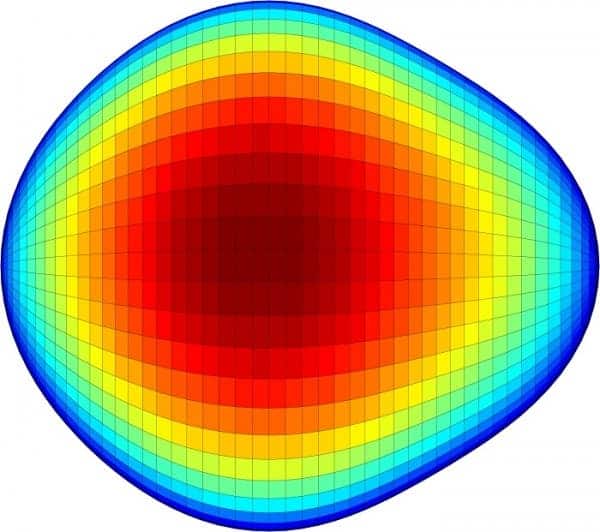The nucleus of an atom is closely shaped like a sphere or rugby ball, signifying that mass is evenly distributed inside it. What happens when you encounter an atom whose nucleus stays away from this conventional shape? Well, this would be a good hint to start finding alternative theories, and wouldn’t you know it scientists at CERN have actually found an atom that doesn’t fit the Standard Model. It’s nucleus’ shape resembles that of a pear, but there’s nothing fruity about it.

An international team of researchers has found direct evidence of pear-shaped nuclei in atoms. (c) Liam Gaffney and Peter Butler, University of Liverpool)
The shape of nuclei is governed by the strong nuclear force that keeps them together and acts against the electrostatic repulsion that pushes protons apart. Many models and assumptions, based on empirical data, have been made to describe nuclei structure, suggesting most atoms’ nuclei are spherical in shape, however some models suggest some atypical shapes as well, like the now proven pear or the yet to be encountered pyramid or banana shaped nuclei.
Researchers at CERN found the pear-shaped nuclei after they fired a high-energy proton beam at a piece of uranium carbide in the ISOLDE isotope mass separator facility at CERN. The pear shape was observed in two sort-lived isotopes, 220Rn and 224Ra, after using the particle accelerator to blast the atoms at eight percent of the speed of light. The data show that while 224Ra is pear-shaped, 220Rn does not assume the fixed shape of a pear but rather vibrates about this shape.
With two confirmed pear-shaped nuclei, scientists now have their work cut out for them since they need to tease apart current theoretical models that didn’t leave room for such nuclei shapes. In fact, the finding could also poke holes in the Standard Model of physics itself, which describes the strong and weak nuclear forces and the electromagnetic force. One of the biggest dilemmas left unanswered by the SM is the matter/anti-matter discrepancy. We’re still to arrive to a sensible explanation as to why there is more matter than anti-matter in the Universe, even though they’ve been created in equal share once with the Big Bang. If matter and antimatter behaved in the same way, they would have almost entirely annihilated one another during the first few seconds of the Big Bang, leaving little but radiation behind.
“If equal amounts of matter and antimatter were created at the Big Bang, everything would have annihilated, and there would be no galaxies, stars, planets or people,” said University of Michigan physicist Tim Chupp, who co-authored the paper on the find., in a UM news release.
Some alternate models predict some nuclei should generate a weak electric dipole field, similar to the magnetic field of a bar magnet. The Standard Model of particle physics predicts that the value of the EDM is so small that it cannot be observed. However there are many theories that suggest that there is a way to measure the EDM. The pear-shaped atom gives physicists the best known example to test these theories and get closer to obtaining observable measurements of the EDM.
“Our findings contradict some nuclear theories and will help refine others. The measurements will also help direct the searches for atomic EDMs currently being carried out in North America and in Europe, where new techniques are being developed to exploit the special properties of radon and radium isotopes,” said Peter Butler, the physicist from the University of Liverpool who carried out the measurements and led the research.
“Our expectation is that the data from our nuclear physics experiments can be combined with the results from atomic trapping experiments measuring EDMs to make the most stringent tests of the Standard Model, the best theory we have for understanding the nature of the building blocks of the universe,” Butler said in a release from University of Liverpool.
The findings were reported in the journal Nature.









